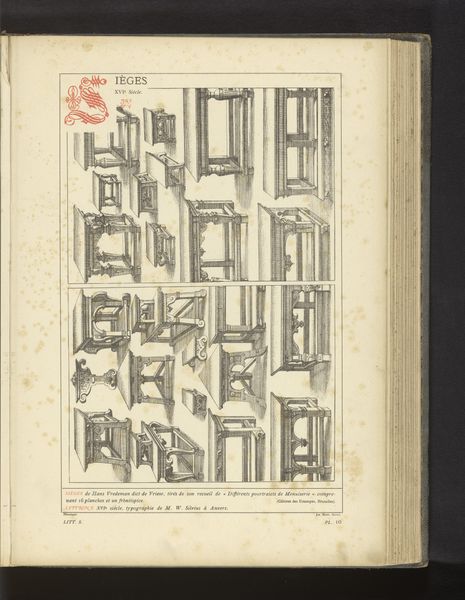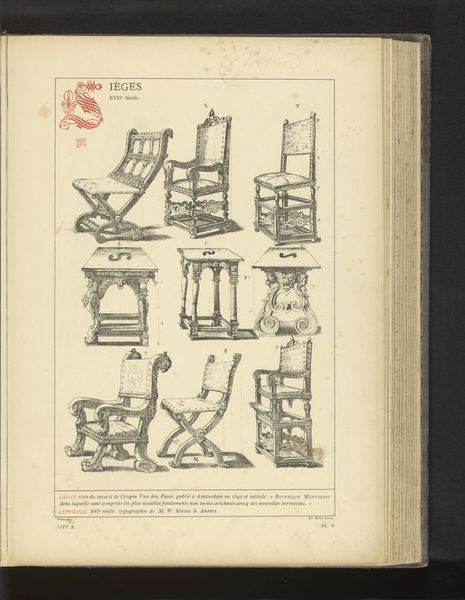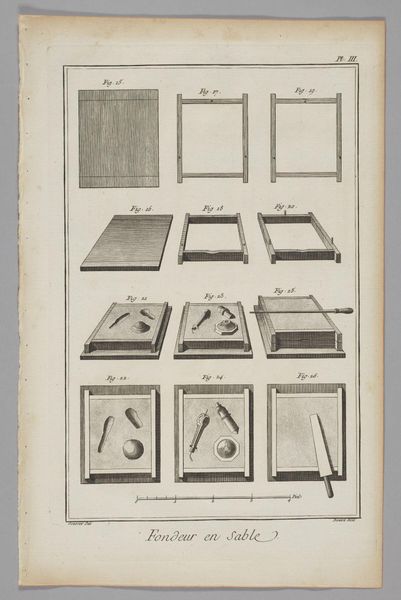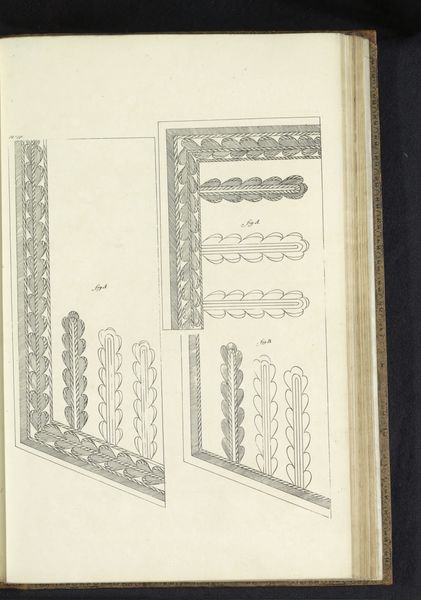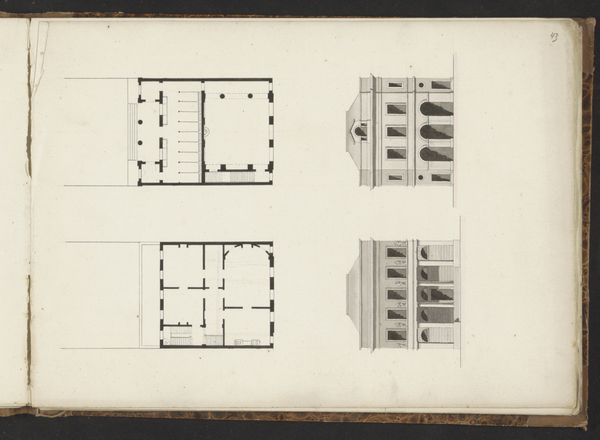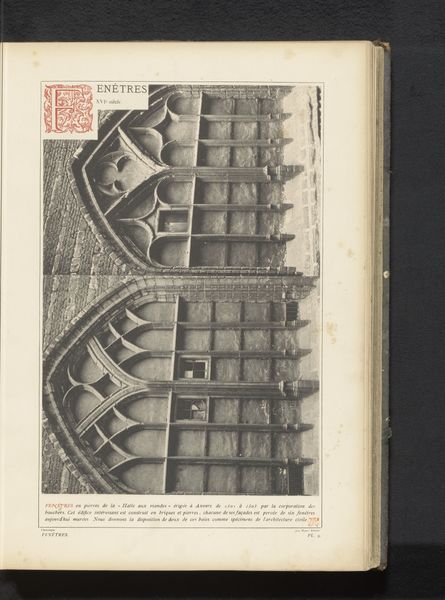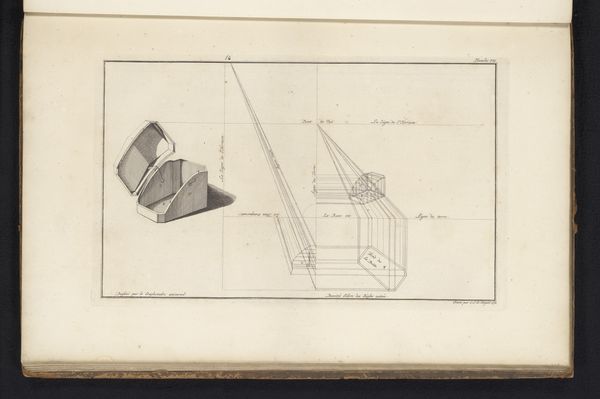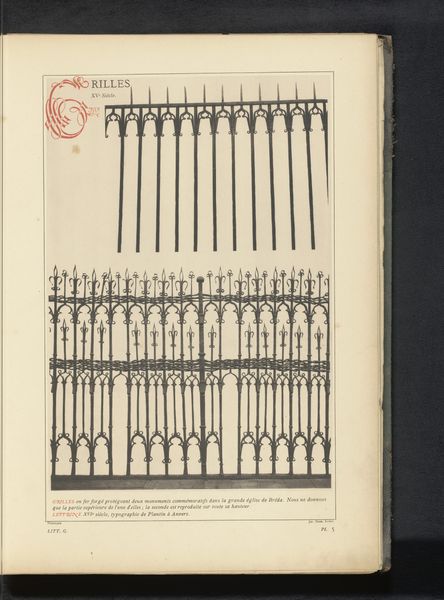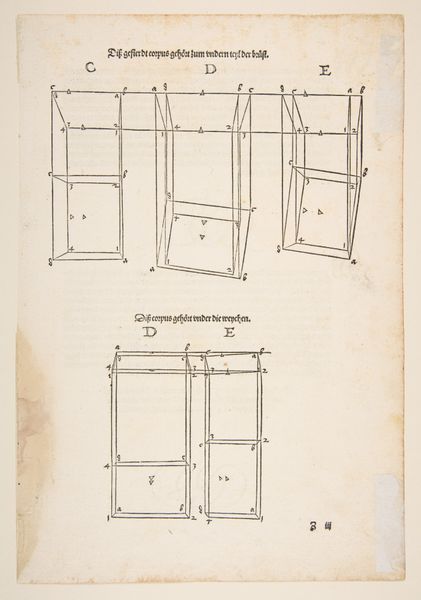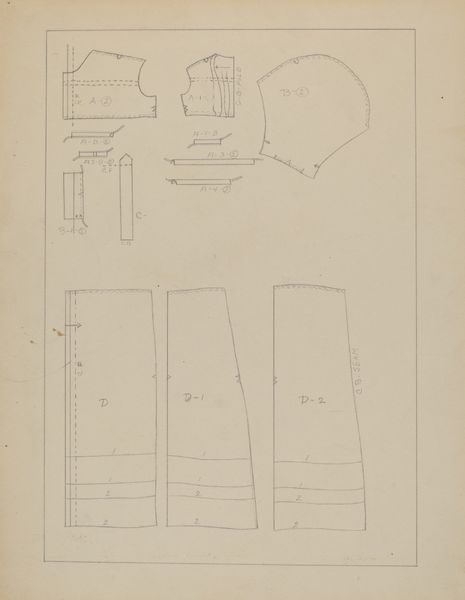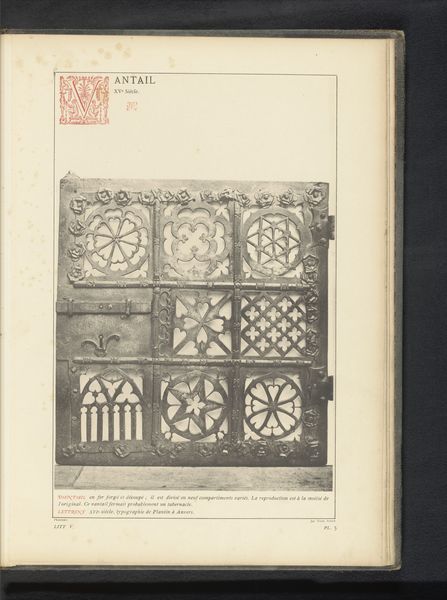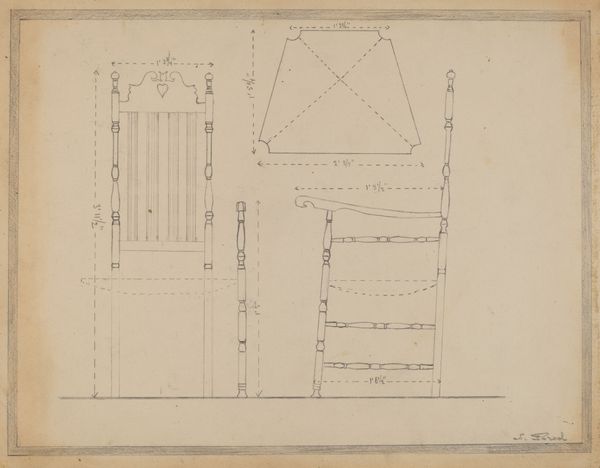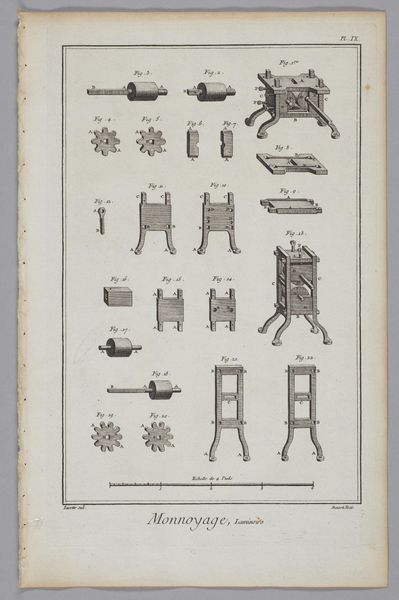
drawing, print, wood, engraving
#
drawing
# print
#
wood
#
engraving
Dimensions: height 230 mm, width 338 mm
Copyright: Rijks Museum: Open Domain
Editor: Here we have an engraving titled "Drie gedecoreerde stoelen van eikenhout," or "Three Decorated Oak Chairs," dated to before 1887. It’s quite a detailed depiction of historical furniture. What strikes me is how different each chair is from the others. How do you interpret this work? Curator: This print, made before 1887, acts as a document. It points us to late 19th-century interests in historicism and the desire to catalogue and preserve material culture. These chairs aren't simply presented as furniture. They’re specimens, displayed for analysis, which brings forth a question about access. Who was meant to consume this image, and what does their perspective tell us about the historical role of design and craft? Editor: That’s an interesting point. I hadn’t considered the consumer of the image itself. Does the choice to depict three chairs together tell us anything about social hierarchies? Curator: Absolutely. The chairs' differing styles hint at varying levels of craft, material, and expense. It implicitly raises questions about who had the privilege of owning or using such objects. Are we meant to consider the chairs' purpose? Are these for powerful, high-status individuals? Moreover, how do these historical designs inform contemporary debates about the democratisation of design and accessibility? Editor: So, it’s less about the chairs themselves and more about the stories they tell about power, access, and privilege. Curator: Exactly. It's about acknowledging that objects, even mundane ones like chairs, carry deep social and political weight that echoes through history and continues to inform how we experience our world today. Editor: That definitely gives me a lot to think about, especially in terms of the social messages inherent in design. Curator: Indeed, and these messages remain relevant. Understanding the past allows us to engage with the present critically and consider how we might shape a more equitable future.
Comments
No comments
Be the first to comment and join the conversation on the ultimate creative platform.

